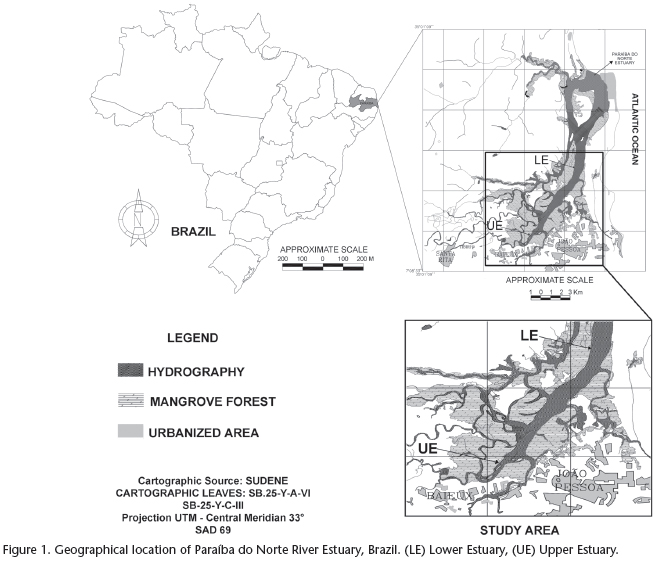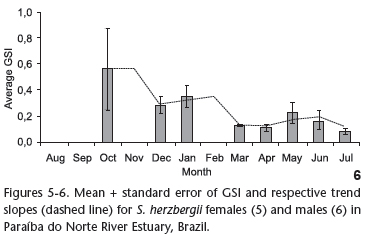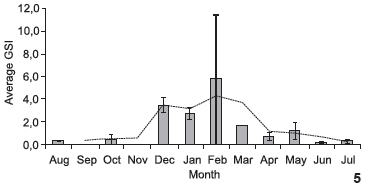The present study investigated the reproductive biology of Sciades herzbergii in the Paraíba do Norte River Estuary, Brazil. We aimed to characterize the reproduction of the species with respect to sex ratio, spawning season, condition factor and length at first maturity. Specimens were captured between August 2009 and July 2010 in a stretch of the main channel of the estuary. In the laboratory, they were measured, weighed and macroscopically classified with regard to sex and gonad development stage, and their gonads were weighted. The monthly distribution of the sexes and their respective stages of maturation were determined. The gonadosomatic index (GSI), condition factor (K) and the length at first maturity were calculated for males and females. The sex ratio was determined monthly and throughout the entire study period and the chi-square test was used to evaluate if the sex ratio differed from 1:1. The Pearson's correlation test was used to determine the correlation between GSI and K values. A total of 260 individuals were captured. It was impossible to determine the sex of 32 individuals, possibly due to their young age. The sex ratio did not differ throughout the overall study period, but significant differences were found in December and May, with a predominance of females, and in March, when males predominated. Spawning activities were concentrated between December and March, as determined by the greater incidence of mature females and higher GSI values. The spawning of the S. herzbergii population is characterized as staggered due to its long duration. For females, K values were not significantly correlated with the GSI, but the decrease in K values in the spawning period indicates that energy is being spent in reproduction. With regard to males, the distribution of developmental stages did not follow the same clear pattern as that seen with females. However, the GSI indicated a greater investment in gonads in October, with a decrease up to July (end of the data acquisition period). For males, K values exhibited a positive correlation with GSI, with a gradual decrease beginning in February up to July, indicating energy that energy was being consumed, which was certainly related to the mouth brooding of eggs and neonates. Mean length at first maturity was 212 mm for females and 240 mm for males. Sciades herzbergii completes its lifecycle in the estuary and exhibits post-spawning parental care. This species is abundant in the estuary studied and information on the reproductive biology of this resident is necessary to the management of the estuarine environment.
condition factor; gonadosomatic index; mean length at first maturity; Paraíba do Norte River Estuary; pemecou sea catfish; spawning period










